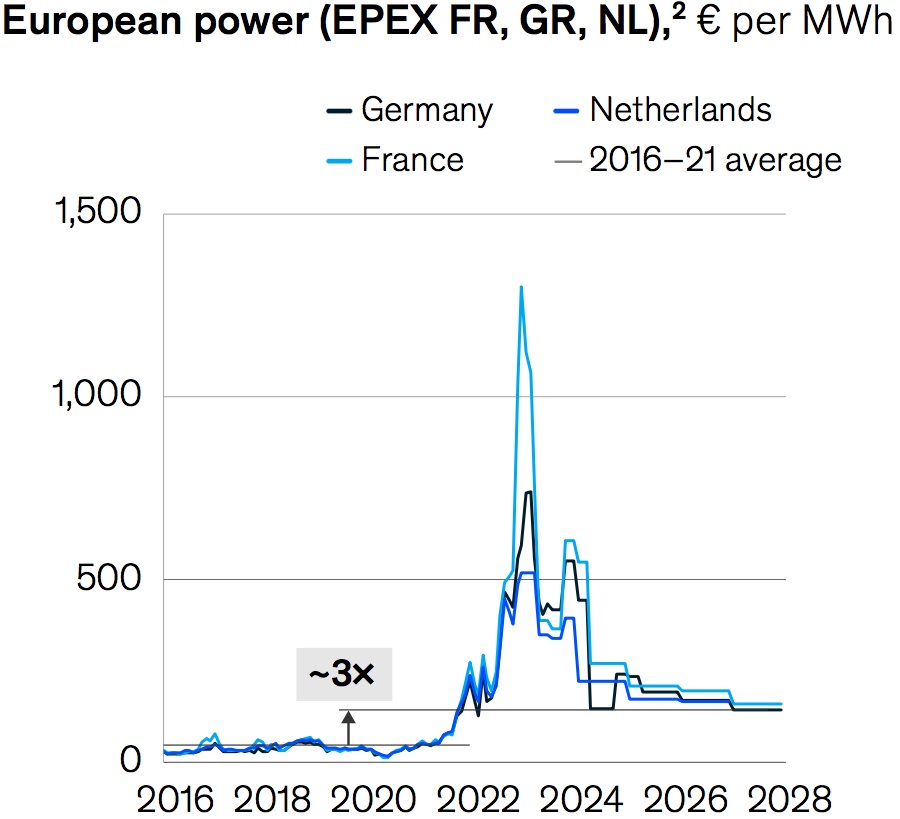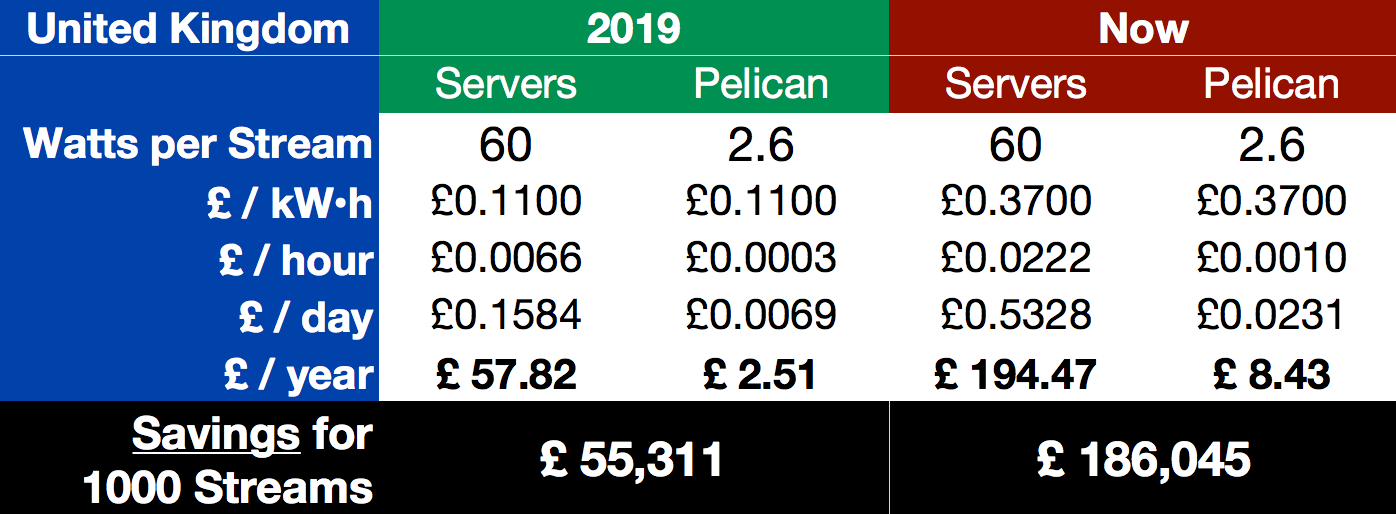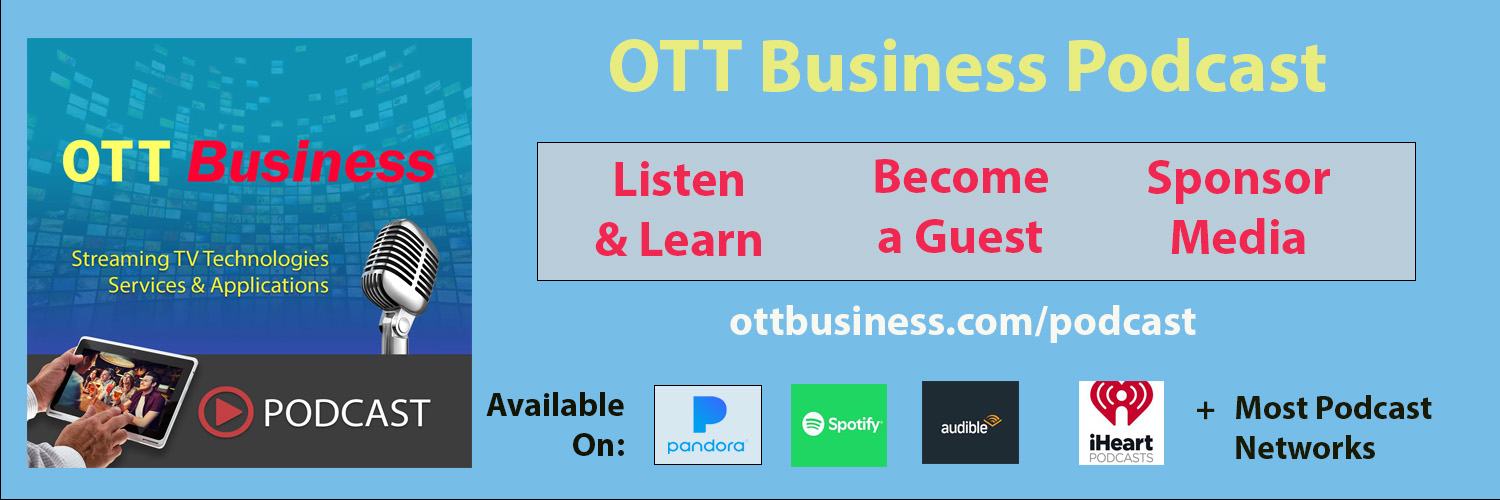The Efficiencies of Hardware Transcoding
by: Danny Wilson, CEO. Torque Video Systems
It would be impossible not to have noticed the incredible rise of OTT (over the top) services over the past ten years. Technology that was originally downplayed as the home of numerous “dog on skateboard” and “funny cat” videos has now evolved to one of the dominate delivery methods for both long and short form content.

Source: McKinsey
High resolution consumer cameras, powerful personal computers, and content delivery over the ubiquitous HTTP-based web infrastructure have substantially lowered most barriers for entry into content production and distribution. Content encoding can easily be done in software running on standard servers and later migrated to the cloud when adding new streams.
But adding streams requires significant increases in additional servers, additional data center space, and the ongoing energy costs to keep them cooled and running. This is made worse when the number of output profiles is increased to accommodate a wider range of bit rates, networks, and devices.
So whether the servers are in the cloud or in your data center, the result is the same: high ongoing costs driven by changes in energy prices.
Not Getting Cheaper
In the United States, data from the U.S. Energy Information Administration [1] shows that commercial electricity rates have increased nearly 25% over the past three years.
While painful, it is nothing compared to the dramatic increases in Europe due to the effects of the ongoing Russian invasion of Ukraine. A report by McKinsey & Company published in January 2023 [2] shows commercial electricity prices have increased a whopping 300% since 2019.
These increases, especially those in Europe, have led to electricity consumption being the number one cost driver for OTT operators.
So what can be done?
The return of hardware encoders
Hardware-based encoders have been the mainstay of the professional television industry since the beginning due to the complexity of the legacy interfaces used to carry audio and video signals – such as SDI (serial digital interface). But hardware encoders have not been needed with OTT with its use of Ethernet and IP protocols for transmission.
That has all changed now.
To increase encoding density while lowering OPEX costs, Google has developed the Argos chipset specifically to increase efficiency and lower costs [3]. As Jeff Calow of YouTube noted, using CPUs for transcoding is “costly and slow” and “pretty inefficient”.
Few companies have the resources to design their own VLSI chip for transcoding. Luckily, Torque Video Systems has launched the Pelican transcoding platform which provides highly scalable and cost effective hardware transcoding.
The performance is impressive.
Not only does Pelican use only 12% of the rack space used by software transcoding solutions, the yearly operating cost is 95% less.
So for 1000 streams switching to Pelican’s hardware transcoding results in direct cost savings of nearly $75,000 per year. That’s in the United States. In Europe, where electricity is much higher, yearly savings are significantly more.

What about quality?
Of course, it doesn’t matter what it costs if the quality does not meet your requirements. And here, again, Pelican does not disappoint.
Independent testing by the Streaming Media Center compared Pelican’s VLSI transcoder with three common transcoding technologies:
- Intel SVT-HEVC
- Xilinx NGCodec FPGA
- FFMpeg software encoding using “medium” and “very fast” modes
- Full VLSI hardware encoder used by Pelican
Four different video test clips were fed into each encoder and the results were compared using subjective (human) evaluation using the “Subjectify” tool
Across all test clips, scores for Pelican’s VLSI encoder exceeded the others by a statistically significant amount.
In Conclusion
The case is pretty clear: significant and ongoing cost savings and improvement in operational efficiencies can be attained by migrating back from the cloud and implementing hardware based transcoding.
References
[1] U.S. Energy Information Administration. “Regional Wholesale Markets: January 2023”
[2] McKinsey & Company. “Four themes shaping the future of the stormy European power market”. January 2023.
[3] Youtube. “Reimagining video infrastructure to empower YouTube”. April 2021.
About Torque
Torque Video Systems provides innovative products and solutions for digital television networks, content providers, and OTT operators which allow them to optimize quality while reducing costs.
Our flagship Pelican video transcode platform provides high quality video transcoding while using only a fraction of the cost, energy and footprint of alternative technologies. Highly energy efficient, Pelican pays for itself in months via dramatically reduced OPEX.
Our other products protect and optimize operations, including the DVStor for compliance recording and disaster recovery playout and the DVMon transmission monitoring and analysis platform.
 Danny Wilson is the Founder and CEO of Torque Video Systems. He is a serial entrepreneur, and has founded several award-winning media technology companies including Visuality, and Pixelmetrix Corporation. He holds the only Emmy award granted in Asia outside of Japan.
Danny Wilson is the Founder and CEO of Torque Video Systems. He is a serial entrepreneur, and has founded several award-winning media technology companies including Visuality, and Pixelmetrix Corporation. He holds the only Emmy award granted in Asia outside of Japan.
Mr Wilson has participated in numerous international bodies including Chairman of the research sub-committee for Media Production, Content Distribution, Digital Advertising, Immersive Media for the Singapore Infocomm Media Master Plan Steering Committee and Editor of the ITU-T’s IPTV Focus group and
Wilson began his management career at Hewlett-Packard, Canada, as the Business Manager of HP’s Communication Measurement Division where he was responsible for the introduction of the MPEGScope Transport Stream Analyzer and the world’s first ATM/B-ISDN Test System.
He is a frequent speaker at media, IPTV, television conferences in Europe, Asia and North America




